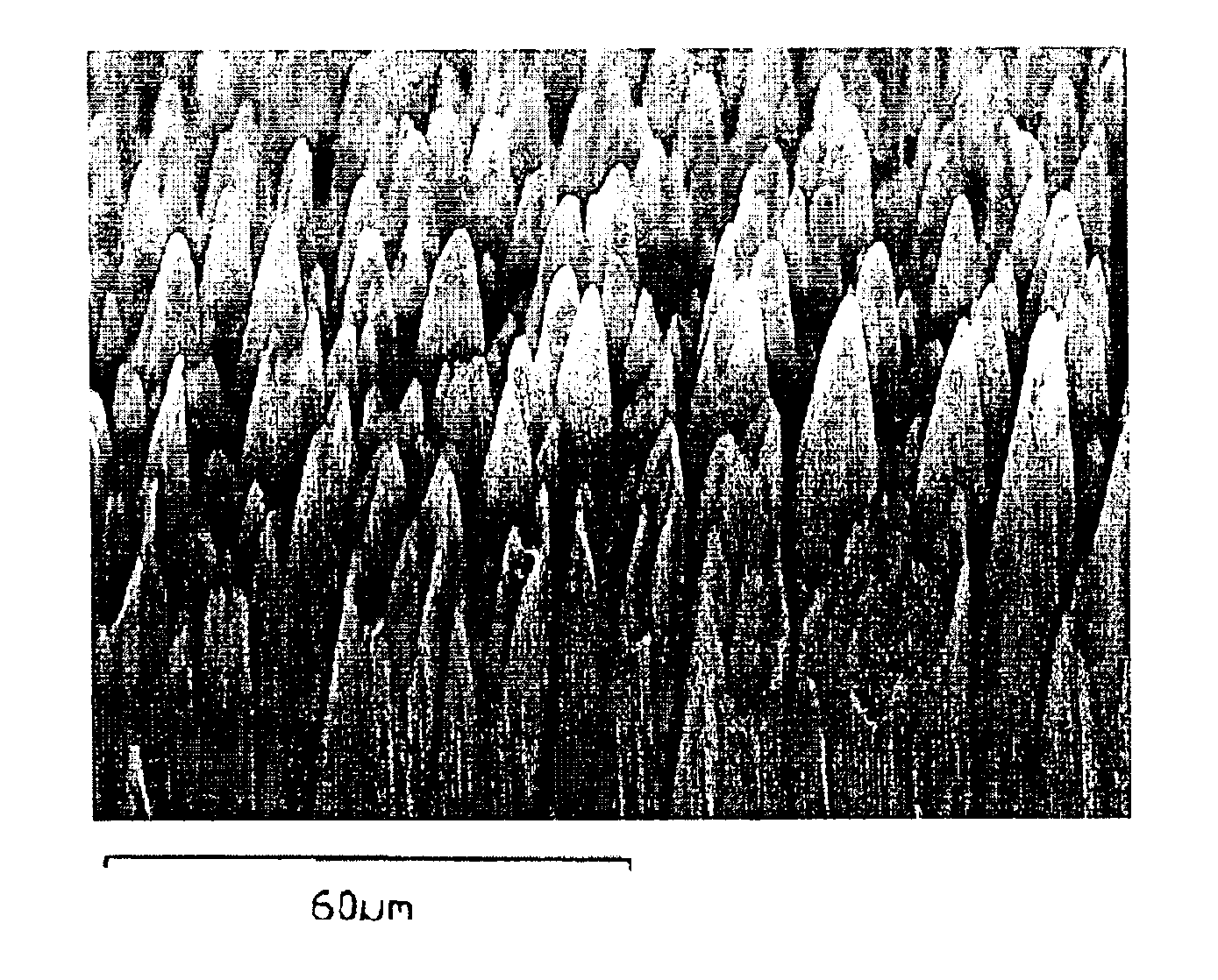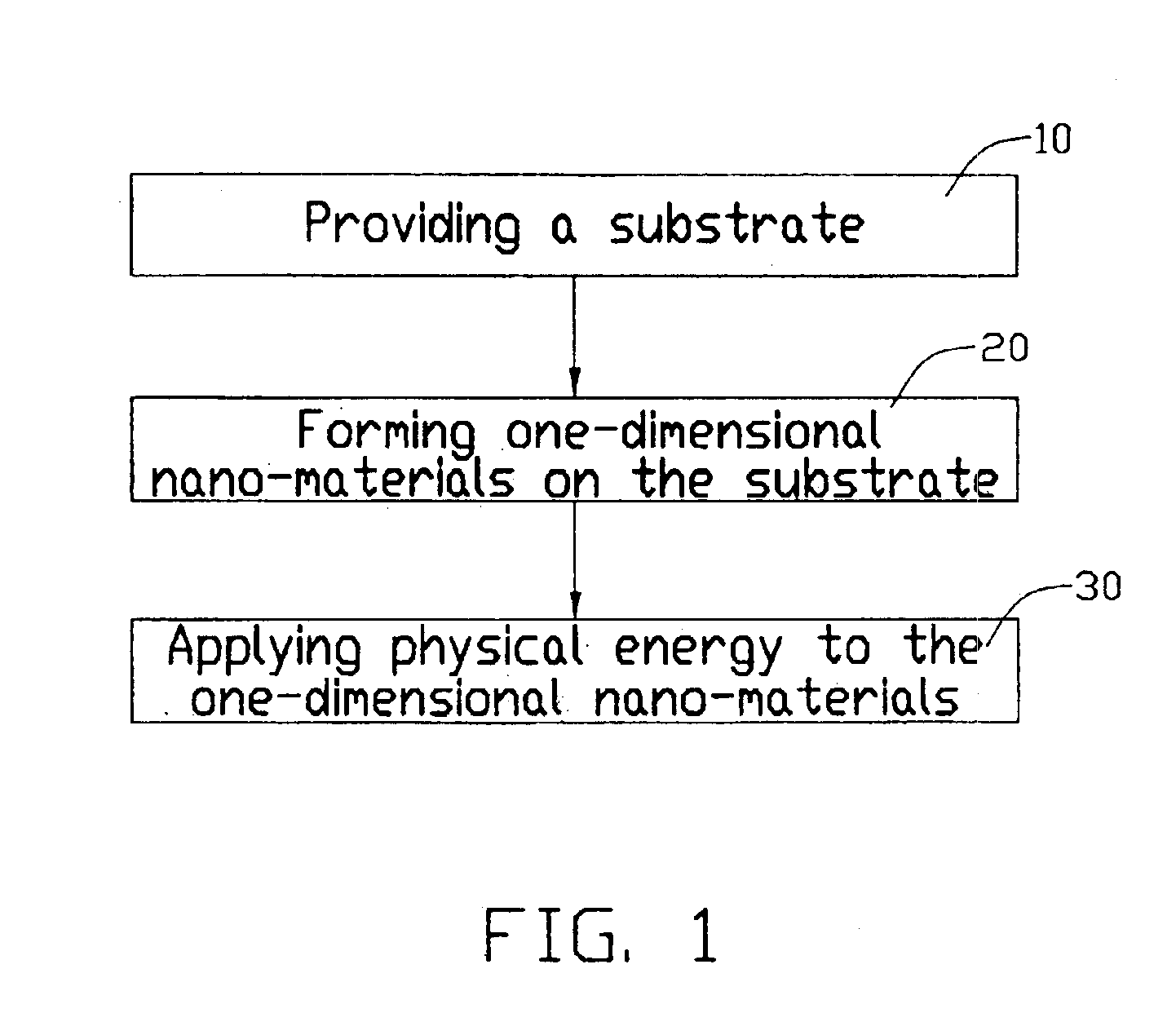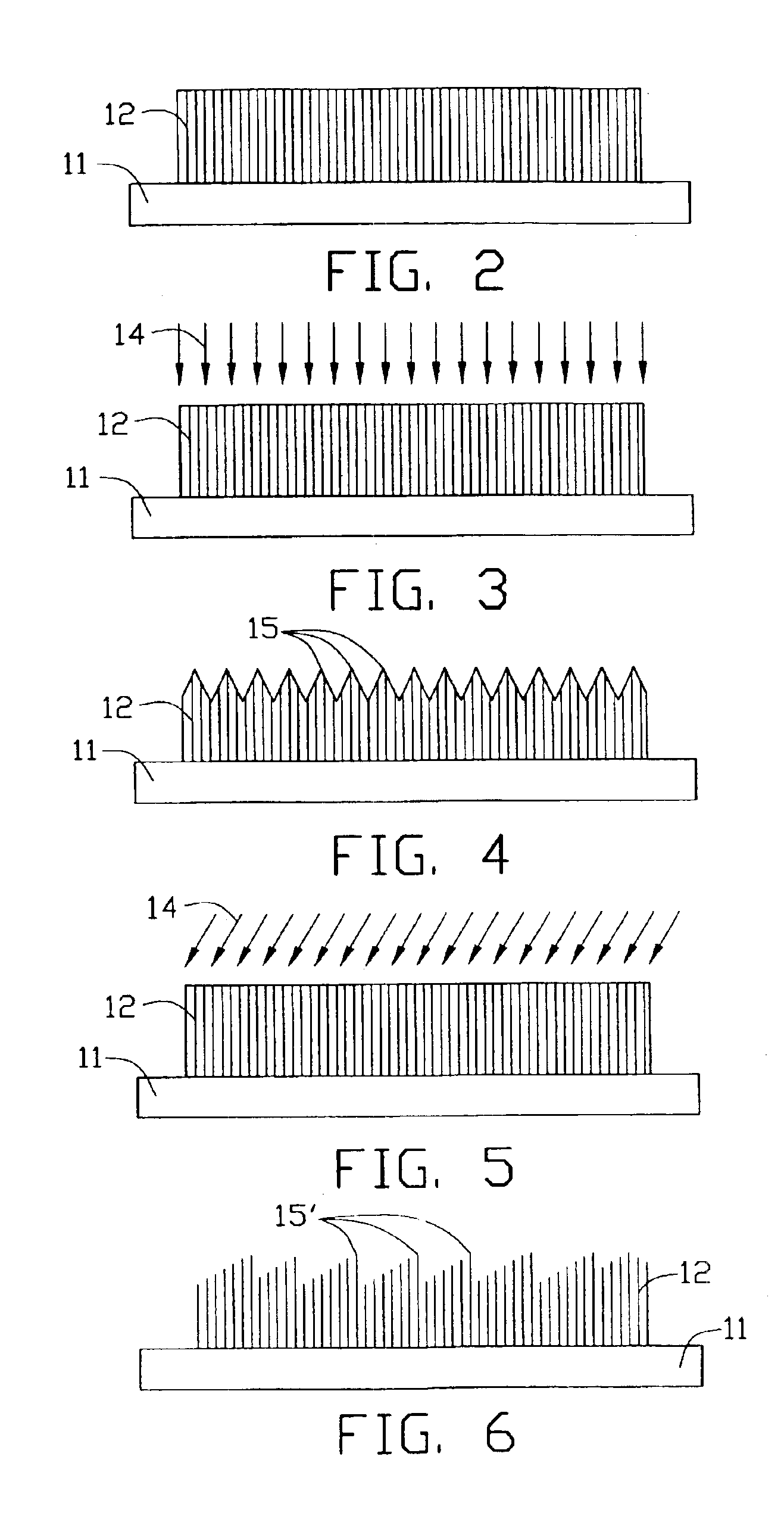Method for processing one-dimensional nano-materials
a nano-material and one-dimensional technology, applied in the field of one-dimensional nano-material processing, can solve the problems of carbon nanotubes formed by any of these methods alone that cannot satisfactorily be used as field emission materials, carbon nanotubes formed by arc discharge and laser vaporization methods have non-uniform heights and orientations, and are prone to being tangled together
- Summary
- Abstract
- Description
- Claims
- Application Information
AI Technical Summary
Benefits of technology
Problems solved by technology
Method used
Image
Examples
Embodiment Construction
[0025]A preferred method for processing one-dimensional nano-materials according to the present invention will be described with reference to the flowchart of FIG. 1.
[0026]Referring also to FIG. 2, a substrate 11 is first provided (step 10). The substrate 11 can be made of glass, silicon, alumina or another suitable material. Then one-dimensional nano-materials 12 are formed on the substrate 11 (step 20). The one-dimensional nano-materials 12 can be carbon nanotubes, nanofibers, nanorods, or nanowires. In the preferred method, the one-dimensional nano-materials 12 are carbon nanotubes 12. The carbon nanotubes 12 can be formed by growing them on the substrate 11 directly, or by transplanting pre-prepared carbon nanotubes onto the substrate 11. The carbon nanotubes 12 are substantially parallel to each other, and are each substantially perpendicular to the substrate 11. The carbon nanotubes 12 cooperatively define a top surface (not labeled) distal from the substrate 11.
[0027]Referrin...
PUM
| Property | Measurement | Unit |
|---|---|---|
| wavelength | aaaaa | aaaaa |
| area | aaaaa | aaaaa |
| angle | aaaaa | aaaaa |
Abstract
Description
Claims
Application Information
 Login to View More
Login to View More - R&D
- Intellectual Property
- Life Sciences
- Materials
- Tech Scout
- Unparalleled Data Quality
- Higher Quality Content
- 60% Fewer Hallucinations
Browse by: Latest US Patents, China's latest patents, Technical Efficacy Thesaurus, Application Domain, Technology Topic, Popular Technical Reports.
© 2025 PatSnap. All rights reserved.Legal|Privacy policy|Modern Slavery Act Transparency Statement|Sitemap|About US| Contact US: help@patsnap.com



